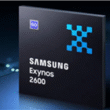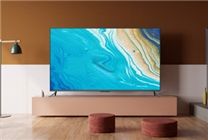Do You Need to Upgrade to 8K? New Research Says It’s Not Worth It
Summary:
- Recent research from the University of Cambridge and Meta reveals that higher resolutions like 4K and 8K may not offer significant benefits for the human eye.
- Findings suggest that at a certain viewing distance, most viewers cannot perceive the differences between 4K, 8K, and lower resolutions.
- The study supports the idea that 2K resolution is generally sufficient for most home viewing scenarios.
In a comprehensive study conducted by the University of Cambridge and Meta, researchers have challenged the conventional wisdom surrounding television resolution. The findings indicate that the advantages of upgrading from 4K to 8K may be negligible for the average viewer, particularly at typical viewing distances.
The Research Findings
Led by Dr. Maliha Ashraf, the research was published in Nature Communications. The study explored how well humans could discern image clarity based on various resolutions and viewing distances. Participants with normal vision were tasked with identifying specific patterns on a 27-inch 4K monitor, observing a mix of black and white and colored images.
The results revealed that while the human eye can distinguish an average of 60 pixels per degree (PPD) under ideal conditions (20/20 vision), this sensitivity declines significantly when it involves color images. In grayscale conditions, participants reached an average resolution recognition of 94 PPD, making high-resolution displays noticeably clearer. However, when it came to colored visuals, the difference became less apparent.
Dr. Ashraf noted that for those viewing a 44-inch 4K television from approximately 2.5 meters away, the details exceed what can be perceived by the naked eye. Upgrading to an 8K model wouldn’t enhance clarity in such circumstances. In essence, investing in higher resolutions may not yield the expected benefits for the average consumer.
Understanding Viewing Distance and Perception
The research team developed a specialized calculator to analyze the limits of human resolution perception. For example, when comparing a 50-inch 2K display viewed from 3 meters, only 1% of viewers would detect differences between the image and an ideal "perfect" image. This percentage falls to 0% for both 4K and 8K resolutions, indicating that at certain distances, the visual experience remains largely the same, irrespective of how high the resolution is.
This conclusion suggests that consumers may not need to rush to purchase the latest high-resolution televisions, particularly if current models meet their viewing needs. For everyday viewing in typical home settings, a 2K resolution may be entirely adequate.
Implications for Consumers
With the continuous marketing push for cutting-edge 8K TVs, this research serves as a vital reminder for consumers to consider their actual viewing scenarios. Here are several implications based on the findings:
-
Cost-Effectiveness: Investing in expensive 8K technology may not provide a return on investment in terms of visual improvement for typical home viewing distances.
-
Value of Current Technologies: Most consumers are likely to find 4K or even 2K resolutions sufficient for their entertainment needs, especially in practical settings.
- Focus on Other Features: Rather than fixating on resolution alone, consumers should evaluate other important attributes of displays, such as contrast, color accuracy, and general display technology.
Final Thoughts
As television technology continues to evolve, the exploration of resolution capabilities highlights a fundamental aspect of consumer technology: the human eye’s limitations. While it can be tempting to chase the newest advancements in display technology, this research suggests that viewers should prioritize quality over mere resolution numbers. Understanding how closely our perception aligns with technological capabilities can lead to more informed purchasing decisions that align with genuine needs and real-world applications.
In conclusion, the findings serve as a reminder that sometimes, less is indeed more, and that a mid-range resolution could be all one needs for an engaging viewing experience.








